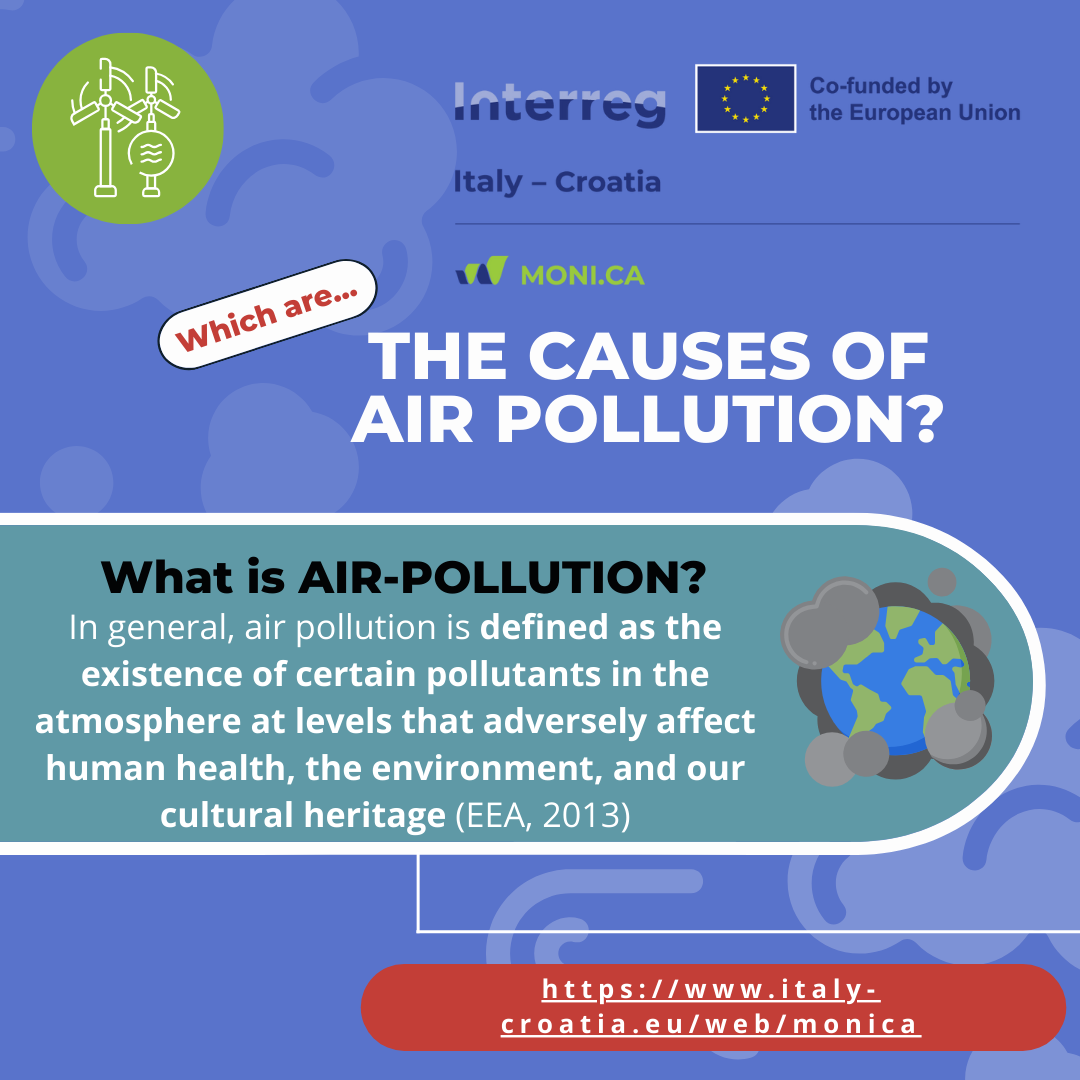Custom Detail
22/03/2024

Dear Community,
welcome back to our ongoing exploration of the critical issue of air quality! Following our recent e-letter that delved into the significance of polluted air, we are now turning our focus to analysing the root causes of air pollution.
In the wake of our previous discourse and as we journey deeper into this realm, it becomes evident that myriad factors contribute to the degradation of our atmosphere.
Have you ever stopped to consider what's behind the haze that clouds our sky?
Look no further than our everyday activities, particularly in the field of energy generation and combustion processes. As a project dedicated to monitoring air quality, it’s crucial for us to dig deeper into these causes to enact meaningful change. Let’s explore facts.
Central to our investigation are the European Union’s Ambient Air Quality Directives. These directives establish rigorous requirements for monitoring pollutants deemed to significantly impact both human and ecological balance. Embedded within these legal standards is an exhaustive list of offenders. From the notorious sulfur dioxide to the insidious benzene, from the elusive ozone to the pervasive carbon monoxide and beyond, a fleet of pollutants demand our attention and action. (European Environment Agency)
Let’s now embark on an exploration of few of the influential factors:
Natural antagonists - Even nature itself, in its intricate dance of balance, can become a perpetrator of air pollution. Events like wildfires, dust storms and volcanic eruptions release particles and gasses into the atmosphere, disturbing regional or global air quality. While these events may be beyond human control, these occurrences highlight the interplay between natural and human-induced influences on air quality.
On the other hand, a substantial share of accountability falls on human-induced factors, specifically:
Industrial facilities - First and foremost, the industrial giants shoulder a significant portion of the blame for air pollution. The constant operation of factories and manufacturing facilities emits large quantities of pollutants into the air, such as particulate matter, sulfur dioxide and nitrogen oxides. According to data collected by FOEN, approximately 50% of volatile organic compound (VOC) emissions are attributed to industry and craftsmanship. These emissions not only darken the sky with their smog-made clouds but also endanger respiratory health and disrupt environmental balance.
Agricultural aggravation - Beyond the vivid cityscape, the rural landscapes conceal a silent contributor to the haze that blankets our skies. Agricultural activities, including livestock farming and crop cultivation, release a cocktail of pollutants into the air. Ammonia, methane and dust particles are among the clandestine emissaries that emanate from these rural domains, intertwining with urban pollutants to paint a grim portrait of atmospheric contamination.
Road transportation - The constant rumble of engines resonates throughout our urban landscapes, sustained by a busy fleet of vehicles that traverse our roads tirelessly. Despite their essential role in modern society, emissions are substantial contributors to the series of pollutants in the atmosphere. Whether it’s carbon monoxide or volatile organic compounds, each exhaust emission adds to the strain on our fragile air quality, with road transport alone responsible for approximately a quarter of total CO2 emissions in Europe, equivalent to 71.7%, according to the European Environment Agency.
Hence, as we analyse the multifaceted tapestry of air pollution, it becomes evident that tackling this multifaceted challenge requires collaboration across all sectors of society.
Within this framework, MONI.CA aims to develop a comprehensive monitoring tool consisting of a solar glider and a set of drones. By collecting data and providing actionable insights to decision-makers, such tools empower us to make informed choices and implement effective strategies for combating air pollution. This convergence of technology and environmental management exemplifies the proactive approach necessary to build a brighter and cleaner future for generations to come.
To learn more about our influence and remain informed, download our infographic and keep an eye out for forthcoming updates.
Related news
26/03/2024
The framework for smart 3D pollution monitoring now available
The theoretical validation of the monitoring concept with launching procedure and sensors needed for specific air pollutants is now available in the Library section. In this first activity, RIT Croatia and Eduforma successfully outlined the Framework for smart 3D pollution monitoring. While the complete version of the Framework can be found in the Library section, we'll provide a brief abstract in this news update
29/01/2024
Why is air-pollution relevant?
In this first e-letter we are going to present why air pollution is relevant for our everyday life and how we can start a concrete change by improving our behaviors




